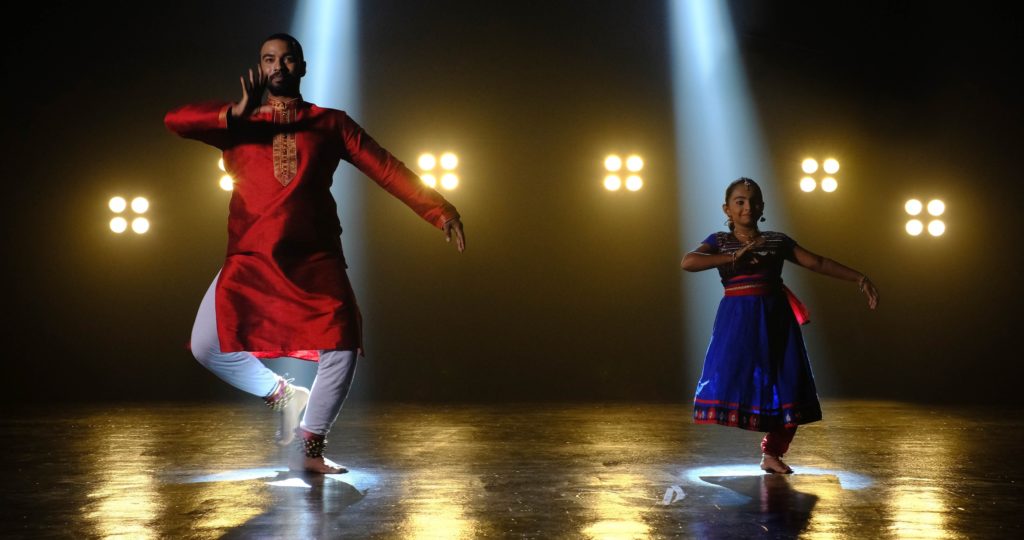Until fairly recently, films from the world of Indian cinema were virtually unknown to western audiences. Full of rich costumes, elaborate and lavish sets, and actors who are often superstars in Asia, the Indian film industry is one of the largest entertainment markets in the world. One of its most unique and instantly recognizable aspects is the style of dance which developed in its large productions, called Bollywood dance. The name “Bollywood” comes from the western nickname for the Indian film business, a mixture of the words “Hollywood” and “Bombay,” the old name for Mumbai, the nation’s second largest city and its Hindi-language film capital. Through the global connectivity of the internet, Bollywood dance is increasingly becoming appreciated by westerners, many of whom enjoy the dances themselves on their own, separate from the films. But what exactly is Bollywood dance?
Tradition Meets The Silver Screen
The roots of Bollywood dance go all the way back to the origins of Indian classical dance, a collection of eight distinct geocultural dance forms which were performed during religious rituals and story-dramas in Ancient India. In the mid-20th century, Hindi-speaking Indian film producers took stylized versions of these forms and fused them with more informal Indian folk dances to create big screen dance productions celebrating a unified vision of Indian culture. This proved to be an incredibly popular formula across India, a country with as many distinct languages and cultural traditions as some continents. With an eye to the new innovations of Hollywood, choreographers started adding elements of western dance, such as jazz, ballroom, and ballet. By the 1970’s, pop music and dance such as disco and funk had been added to the mix, creating the modern “east-meets-west” sensibility that defines Bollywood dance. The hit dance song sequence “Mehbooba Mehbooba” from the 1975 film ‘Sholay,’ is an excellent example of Bollywood dance during its period of absorbing western influences from Hollywood.
An Evolving Art
Because of its high production output, Bollywood as an industry is constantly innovating, creating new synergies with existing and cutting edge cultural phenomena. This translates to new dance productions that rely as much on western pop culture trends as they do on tradition. From the 1980’s to the present day, Bollywood dance has incorporated elements of hip hop, R’n’B, jazz funk, and classic rock in its choreography. Influential choreographer Prabhu Deva is particularly known for this approach, having been influenced by large stage pop productions by artists like Michael Jackson and Beyoncé.
Can I Learn Bollywood Dance?
Anyone can learn Bollywood dance, and because of its western influences, much of the choreography can be broken down into 8 count structures which are familiar to Americans. At its heart, Bollywood dance is about performing motions which can appear simple with as much grace and style as is possible. Due to its strong Indian classical dance heritage, the forms and movements are practiced with an emphasis on effortlessness. But don’t let that discourage you. Beginners will find the various arm poses fairly easy to learn, and much of the footwork resembles common moves like two-steps and square dance figures. A student with even a rudimentary understanding of dance will easily be able to find a footing in Bollywood dance. Simple Bollywood dance moves often involve a coordination between a two-step, hip sway, and accompanying arm gesture. Like many dance styles, Bollywood can be defined as “easy to learn, harder to master.”
Start Taking Bollywood with CLI Studios


Join SYTYCD choreographer Nakul Dev Mahajan Bollywood classes for all levels. You can try his classes by heading to clistudios.com and getting started with a 7-day free trial!

